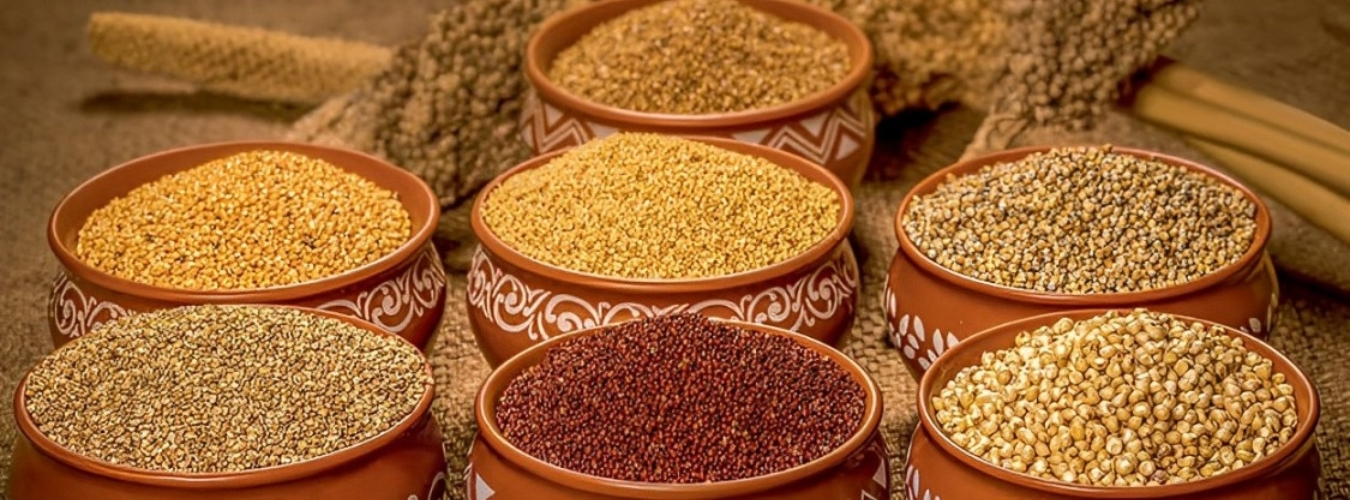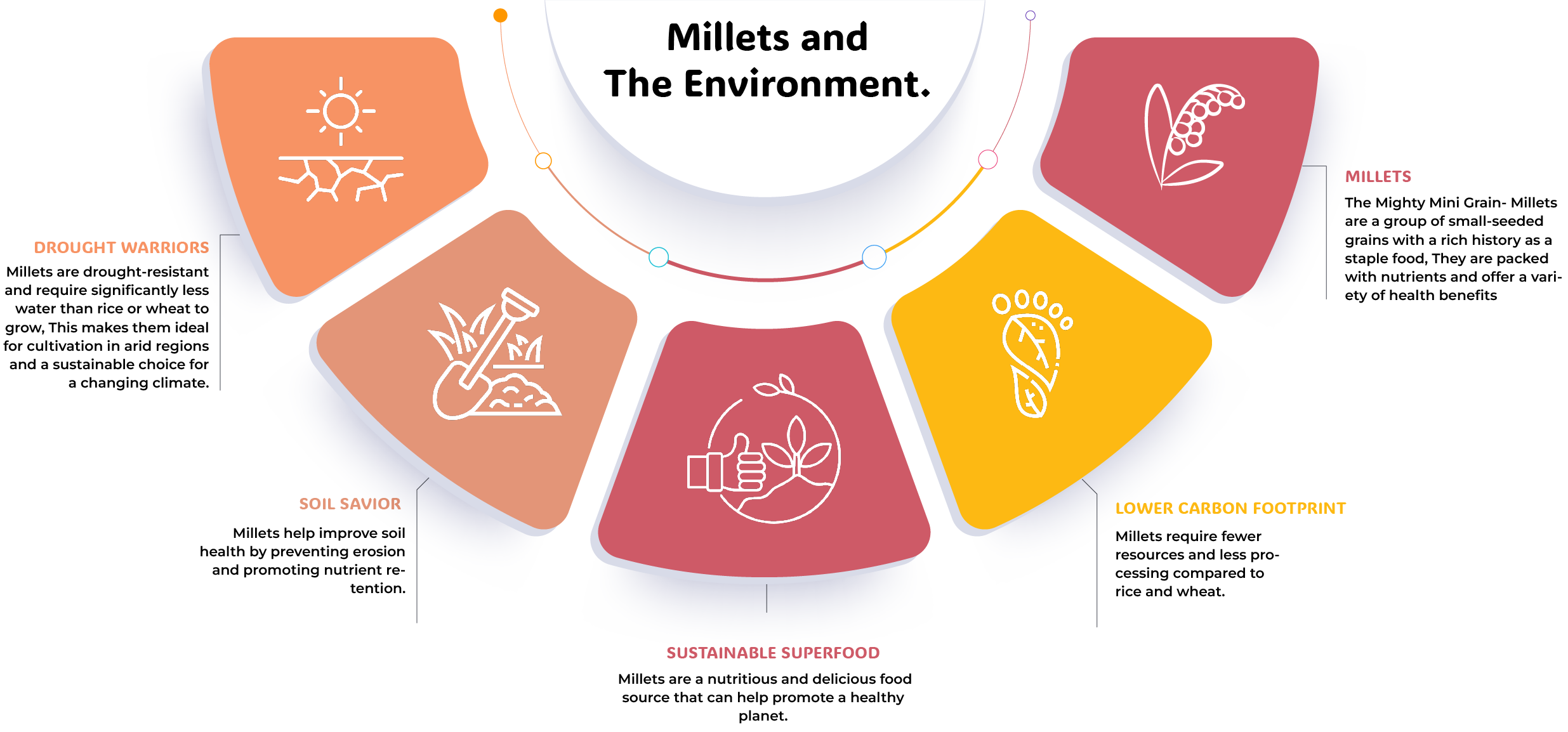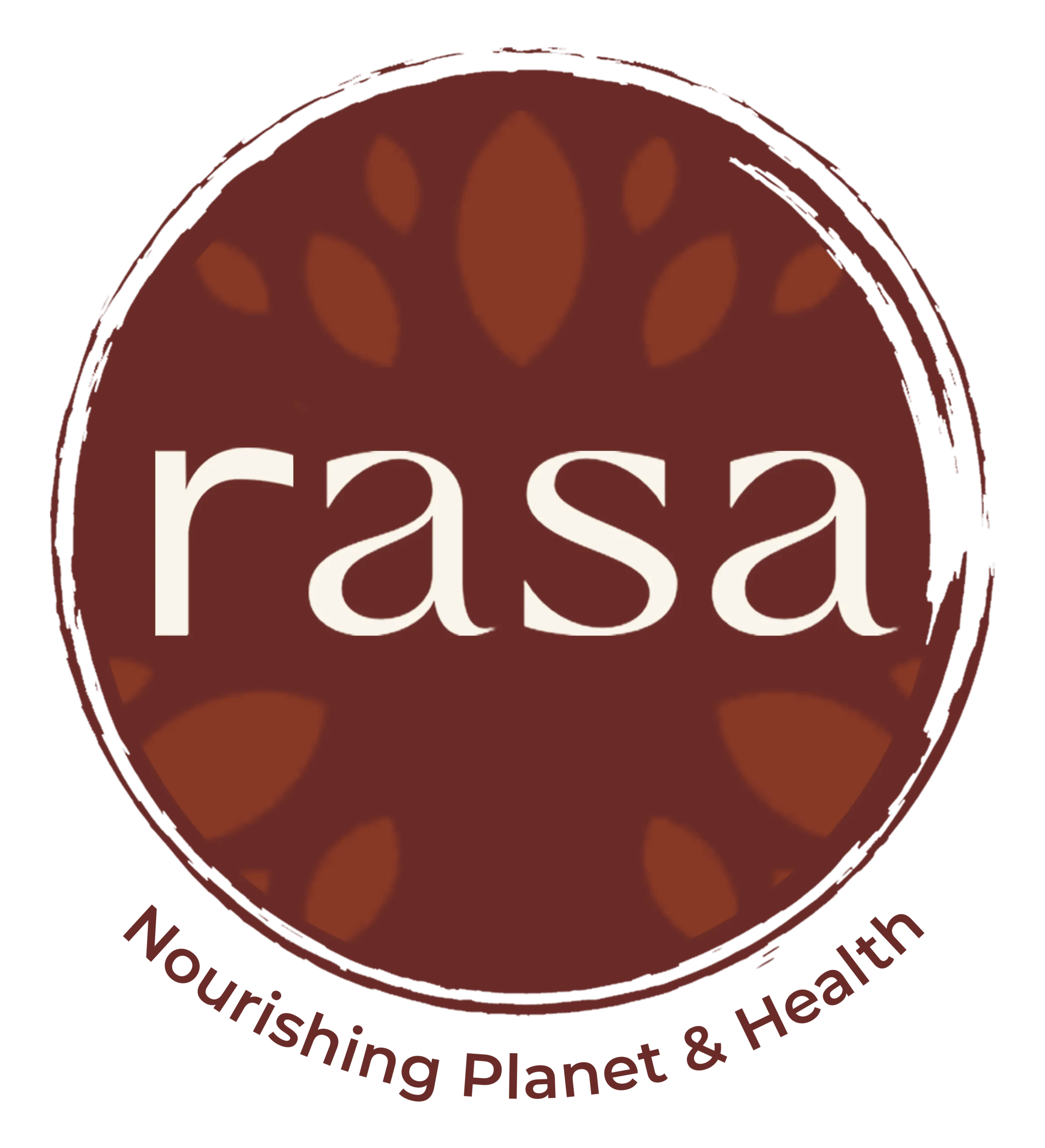
What is millets?
Everything You Need to Know! 👀
RASA Millets are traditional grains, grown and eaten in the Indian subcontinent for several years. These nutrient-dense seeds are available in a variety, including foxtail millet (light and fluffy). Millets are a gluten-free dream come true for people suffering from gluten sensitivity since they are high in fiber for digestion and feelings of fullness, protein for building and repair, and necessary minerals for overall health. Furthermore, their low glycemic index makes them beneficial to people maintaining blood sugar levels. Millets are not only good for your health, but they are also incredibly sustainable. They flourish in arid environments and produce good soil, using less water and resources than rice or wheat. Millets are a fantastic way to add diversity to salads, soups, and sweet delights.

The green revolution was a landmark initiative to rehaul the agricultural practices of our country. It was launched in response to the multiple famines in the 1950s and 1960s so as to make the country self sufficient with respect to food production. Then took a “package” approach – using hybrid variety seeds which have higher yield, adding fertilizers to deal with the additional requirement of this crop, using pesticides and other additives since these hybrid varieties had no defense against local pests and diseases & building dams, supplying electricity, installing bore wells and other methods of making sure the crops have sufficient water.
There picked two cereals as the main force of change: Paddy Rice (Oryza Sativa) and wheat (Triticum aestivum). These two grains were made available to farmers and subsidized heavily to get more farmers to grow these (The whole package was subsidized: fertilizers, pesticides, electricity, etc) These initiatives worked remarkably well in making our country produce more food (we produce more than we use now), so well that farmers everywhere switched to growing rice and wheat instead of traditional, hardy cereals like millets. Only the most remote villages and tribes kept to their traditional methods of growing millets and other hardy crops.

HEALTH BENEFITS OF MILLETS
Millets are highly nutritious, rich in fiber and gluten-free, making them easy for the body to absorb. They are rich in a huge spectrum of micronutrients, including calcium, iron, phosphorus, etc. They are slow digesting foods which don’t cause the huge spike in blood sugar which is caused by eating polished rice, therefore, millets help with preventing and controlling diabetes.
A low glycemic index makes them an ideal rice substitute, good for cholesterol, diabetes and weight loss.
According to traditional medicine, millet support digestion, improve appetite, nourish prana and blood deficiencies, increase lactation, harmonize the stomach, and calm the sleep.
Apart from these obvious benefits, these super grains are a great source of several vitamins and minerals, including phosphorus, important for energy production and storage, magnesium which enhances nutrient delivery and increases insulin sensitivity. Though every type has a different nutrient profile, most are high in protein, contain minerals such as calcium, iron and zinc and are rich in vitamin B6, niacin and folic acid. Lignans in millet is thought to protect us against breast cancer and cardio-vascular diseases.

Millets and the Environment
With climate change on our minds and rainfall becoming more and more unpredictable, millets are turning out to be one of the most important grains for the whole world. Being rain-fed crops, Millets put minimal stress on our delicate, already overloaded water systems. Growing millets does not necessitate construction of expensive & ecologically disruptive dams and irrigation systems. They can survive on soil where rice and wheat cannot grow, even slightly saline and acidic soils, so they can grow well without fertilizers and other soil enhancing chemicals. Also, millets are not susceptible to pests and do not need spraying of pesticides. Millets strengthen food security since they are less likely to fail than other cereal crops.
Should I soak millets before cooking?
It is preferable to soak the rice or brokens of millets for 2 to 6 hours before cooking. This is helpful in improving the probiotic qualities of the food. In case one is unable to presoak the rice or grits before cooking, then there will some reduction in the probiotic qualities, it is in no way harmful or has ill effects of the people consuming. When you soak, you need to use less water and also cook for little less time.

